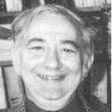
Author: Donald Broadbent
Donald E. Broadbent (Birmingham, 1926-April 10, 1993) was an influential British experimental psychologist. His career and his research work bridged the gap between the pre-Second World War approach of Sir Frederick Bartlett and its wartime development into applied psychology, and what from the late 1960s became known as cognitive psychology.
Educated at the University of Cambridge, in 1958 he became director of the Applied Psychology Research Unit which had been set up there by the UK Medical Research Council on Bartlett\'s persuasion in 1944. Although much of the work of the APRU was directed at practical issues of military or industrial significance, Broadbent rapidly became well known for his theoretical work. His theories of selective attention and short-term memory were developed as digital computers were beginning to become available to the academic community, and were among the first to use computer analogies to make a serious contribution to the analysis of human cognition. They were combined to form what became known as the \"single channel hypothesis\". His Filter Model proposed that the physical characteristics (e.g., pitch, loudness) of an auditorily presented message were used to focus attention to only a single message. Broadbent\'s Filter model is referred to as an early selection model because irrelevant messages are filtered out before the stimulus information is processed for meaning. These and other theories were brought together in his 1958 book \"Perception and Communication\" which remains one of the classic texts of cognitive psychology. In 1974 Broadbent became a fellow of Wolfson College, Oxford and returned to applied problems, developing new ideas about implicit learning from consideration of human performance in complex industrial processes along with his colleague Dianne Berry
Publications
Co-authors
Productive Colleagues
Publications
Berry, Dianne C., Broadbent, Donald (1990): The Role of Instruction and Verbalization in Improving Performance on Complex Search Tasks. In Behaviour and Information Technology, 9 (3) pp. 175-190.